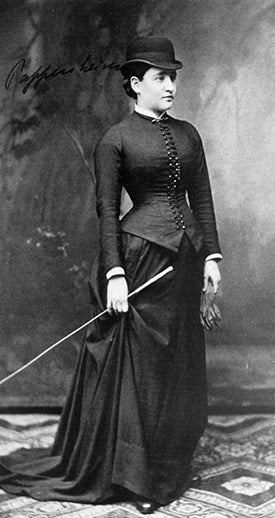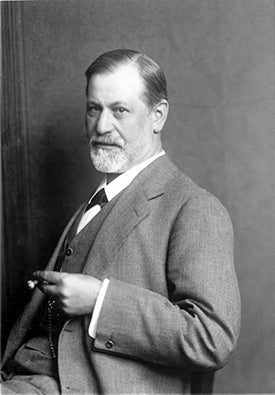This article was published in Scientific American’s former blog network and reflects the views of the author, not necessarily those of Scientific American
The Viennese physician Josef Breuer (1842-1925) has a unique and prominent place in the history of psychotherapy. From 1880-82, while treating a patient known as Anna O., Breuer developed the cathartic method, or talking cure, for treating nervous disorders. As a result of that treatment, he formulated many of the key concepts that laid the foundation for modern psychotherapy. This month marked the 90th anniversary of Breuer’s death, offering an opportunity to reflect on the value of his contributions.
Breuer is best known for his collaboration with Sigmund Freud and for introducing Freud to the case of Anna O. (whose real name was Bertha Pappenheim). The ideas emerging from that case so fascinated Freud that he devoted the rest of his career to developing them, in the form of psychoanalysis. The two men co-authored Studies on Hysteria, published in 1895, which is considered the founding text of psychoanalysis. However, the significance of Breuer’s contributions goes well beyond his role as Freud’s mentor and collaborator. In fact, Breuer laid the groundwork for modern talk therapy by, for example, considering all aspects of his patients's life and personality and focusing on emotional expression as opposed to the Freudian emphasis on insight and interpretation.
I discovered Breuer early in my training as a therapist, after I realized that helping my clients gain insight into their problems, as the principal focus of treatment, was rarely effective in causing fundamental change. I found Freud’s technique of free association unhelpful, because many clients who are anxious or depressed have difficulty associating freely. The most therapeutic sessions were the ones that elicited an emotional response from my clients. If I could guide them to access feelings and memories, relevant to their area of concern, they would often report a sense of something shifting inside them, which dramatically accelerated the process of growth and change.
On supporting science journalism
If you're enjoying this article, consider supporting our award-winning journalism by subscribing. By purchasing a subscription you are helping to ensure the future of impactful stories about the discoveries and ideas shaping our world today.

Bertha Pappenheim.
Credit: Albrecht Hirschmüller/Wikimedia Commons
I wanted to learn how to elicit those types of experiences consistently and began to explore techniques such as hypnosis, mindfulness and focusing, all of which involve subtle shifts in the client’s state of awareness. While studying the literature to understand the nature of these changes, I was led to Breuer’s description of the cathartic method and his work with Anna O. in Studies on Hysteria. Breuer’s ideas were strikingly relevant to modern views of therapy, and my work with clients, and I was surprised they were not more widely known.
Breuer’s theoretical essay in Studies on Hysteria repays close reading, as many of the observations in it are remarkably prescient. The essay is more than sixty pages long and provides a comprehensive account of the nature, cause and treatment of mental illness with astonishing clarity, rigor and depth of insight. In 1955, James Strachey, the English translator of Studies on Hysteria, described the essay as “very far from being out of date; on the contrary, it conceals thoughts and suggestions which have even now not been turned to sufficient account.” His statement is just as true today.
According to Breuer’s theory of hysteria, the illness begins when someone is exposed to psychic trauma, which he defined as any situation with a risk of serious physical or emotional injury. If the individual is unable to feel and express the emotions related to the traumatic experience, they are dissociated, that is, isolated in a separate state of consciousness that is inaccessible to ordinary awareness. Here, Breuer acknowledged and built on the pioneering work of French psychiatrist, Pierre Janet, who was the first to assert the importance of dissociation in mental illness. Breuer called this altered state of consciousness the hypnoid state, owing to its similarity to the state induced by hypnosis. Recovery and healing require accessing and expressing the dissociated emotions, through catharsis, and integrating them with the ideas in normal consciousness, a process he called associative correction.
If we compare Breuer’s theory with Freud’s formulation of psychoanalysis, there are three main differences: psychic trauma (Breuer) vs. sexual conflict (Freud) as the primary cause of psychopathology, hypnoid states (dissociation) vs. repression (defense) as the primary mechanism, and emotional expression (catharsis) vs. interpretation (analysis) as the primary means of recovery. Ironically, in each of those points, the modern view of psychotherapy has increasingly come to favor Breuer.
A large and growing body of evidence, compiled by researchers such as Bessel van der Kolk, points to the central role of trauma in the origin of psychopathology. Understanding the effects of trauma is now a major focus of medical research, driven by the urgent need to find effective treatments for PTSD. Breuer’s work is also highly relevant to clinical practice. His concept of the hypnoid state, for example, is remarkably similar to, and provides a unifying link between, techniques such as mindfulness, focusing, neurofeedback and EMDR (Eye Movement Desensitization and Reprocessing) that are of importance in therapy today.

Sigmund Freud.
Credit: Wikimedia Commons
The publication of Studies on Hysteria marked the end of the Breuer-Freud collaboration. Freud increasingly grew to believe that conflicts related to sexuality played an essential role in all cases of hysteria. Breuer acknowledged the importance of sexuality but considered it only one of many factors. Instead, Breuer asserted the phenomenon of dissociation due to trauma, which was implicit in his theory of hypnoid states, was more fundamental.
In a letter to the Swiss psychiatrist Auguste Forel in 1907, Breuer wrote, “this immersion in the sexual in theory and practice is not to my taste.” He went on to write, “Freud is a man given to absolute and exclusive formulations: this is a psychical need, which in my opinion, leads to excessive generalization.” Freud for his part was skeptical of the whole concept of hypnoid states. In Five Lectures on Psychoanalysis, he wrote that “Breuer's theory of 'hypnoid states' turned out to be impeding and unnecessary, and it has been dropped by psycho-analysis today.”
Freud also promoted the idea that Breuer was too cautious and conservative to recognize the true importance of sexuality. To support this view, Freud claimed Breuer had abruptly terminated his work with Anna O., and resolved never to work with hysterical patients again, because she developed strong sexual feelings towards him. This view was asserted as fact by Freud’s biographer, Ernest Jones, and came to define the conventional view of the matter.
However, there is no reliable basis for Freud’s claim. Psychoanalyst and Freud biographer Louis Breger writes: “Freud’s version of what happened is simply not true. It is an example of the “resistance” argument that he later used to dismiss everyone who raised questions about his theory of sexuality: They could not accept it because it was too personally threatening.” Freud would later use a similar argument with many of his followers who disagreed with him, including Carl Jung, Alfred Adler, Sandor Ferenczi and Otto Rank. Breger goes on to assert: “The truth is that Breuer did not flee from Bertha but remained involved with her treatment for several years.”
In The Interpretation of Dreams, Freud wrote: “An intimate friend and a hated enemy have always been necessary requirements of my emotional life. I always knew how to provide myself with both over and over…sometimes the two were united within the same person.” That statement is remarkably descriptive of Freud’s relationship with Breuer.
It is notable that Breuer had been more than a collaborator to Freud, who was 14 years younger, lending him money, referring patients to his practice, and welcoming him into his home. Yale historian Peter Gay, in his biography of Freud, wrote, “His disagreeable grumbling about Breuer in the 1890s is a classic case of ingratitude, the resentment of a proud debtor against his benefactor.”
Breuer never publicly challenged Freud or responded to his criticisms, choosing instead to withdraw from the field of psychology to focus on his medical practice. Freud had the field all to himself and his writings decisively shaped the public view of Breuer, which persists to this day.
Setting aside personal details, the key question is whose ideas were more valid, and in that regard history is squarely on the side of Breuer. Freud’s emphasis on sexuality as the dominant factor shaping human development and causing psychopathology is no longer taken seriously today. Instead, the role of dissociation due to trauma is increasingly recognized as more fundamental. Also, most therapists today realize the importance of helping clients access and integrate painful emotions due to past trauma, which is the essence of Breuer’s cathartic method.
When Breuer developed the cathartic method to treat Anna O., he initiated several radical changes. First, he shifted the focus of therapy from suggestion by the therapist to self-discovery by the patient. Second, he expanded the scope of therapy from a narrow focus on treating symptoms to considering all aspects of the patient’s life and personality, thereby founding psychotherapy as a distinct discipline in its own right. Finally, he was the first person to treat mental illness through the long-term exploration of unconscious conflicts, and invented the talking cure, the treatment approach central to all forms of psychotherapy. While conventional wisdom assigns Freud credit for these achievements, the fact is they were all present in Breuer's treatment of Anna O. before his collaboration with Freud began.
The key to Breuer’s greatness was that he had the intelligence and openness of mind to recognize that his patient had much to teach him, and the humility to value her experience over his authority as a physician. Ninety years after his death, Breuer’s ideas inform and enrich my work with clients every day, reminding me to learn from their perspective, respect the role of trauma and value emotional experience over insight.
Further Reading
Studies on Hysteria. Josef Breuer and Sigmund Freud. Translated from the German and edited by James Strachey. Hogarth Press, 1955.
The Life and Work of Josef Breuer. Albrecht Hirschmuller, New York University Press, 1978.
Freud: A Life For Our Time. Peter Gay, Macmillan, 1988.
A Dream of Undying Fame: How Freud Betrayed His Mentor and Invented Psychoanalysis. Louis Breger, Basic Books, 2009.
The Body Keeps the Score: Brain, Mind, and Body in the Healing of Trauma. Bessel van der Kolk, Viking, 2014.